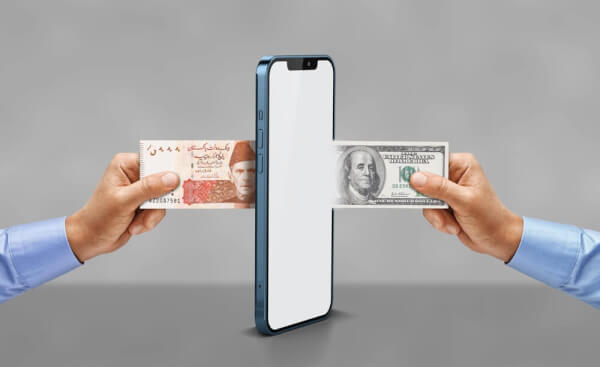Revolut money transfer (2025): Fees, limits, and is it safe in Australia
Thinking of transferring money with Revolut? Our guide breaks down their money transfer fees, exchange rates, and limits.

It’s increasingly common, as the world becomes more connected, that people choose to live and work overseas. As well as carving out a career in a new country, expats often frequently choose to remit money back home, to friends and loved ones. The global remittance industry is huge, hitting a total of USD 574 billion in 2016.1 The flow of money from Singapore to India alone was a staggering USD 806 million in 2016.1
If you’re working away from your home country, and want to make a cross-border money transfer back home, then it pays to know how you can do this, and what each option will cost you. You could choose a familiar bank such as DBS, OCBC or UOB - but it’s worth also checking out specialists in international money transfers like Wise, as you might be able to get a better deal with them.
Here’s all you need to know about the steps to take to make an outward remittance payment - and the likely fees.
An outward remittance - which you may also see described as a wire transfer outward remittance - is usually when someone who lives and works in a country other than their own, sends money home. This could be to pay ongoing financial commitments in their home country, such as a mortgage, or to support family members, for example.
There are many different options when it comes to making an outward remittance, including wire transfers placed by a traditional bank, using a service such as Western Union to have your recipient receive cash directly, or using a specialist service like Wise to deliver your remittance quickly and safely. All these options come with different fees and charges - which we will discuss later.
Whenever you make an outward remittance payment, there will be a fee - or several fees - to pay. The exact charges will depend on the type of bank account you and the recipient hold, as well as the details of the transaction. Below are the typical costs as an example - but you’ll need to check the fees for your specific transfer with your own bank:
| Bank or money transfer service | Outward remittance costs in SGD |
|---|---|
| DBS | Cable/Telex charge $25 + handling commission between $5- $35 + exchange rate markup + likely fees from intermediary and recipient banks² |
| OCBC | Fees vary between $25- $55 + exchange rate markup + likely fees from intermediary and recipient banks³ |
| UOB | Fees vary between $10- $300 + exchange rate markup + likely fees from intermediary and recipient banks⁴ |
| Wise⁵ | Payments up to $180,000:0,5% of the amount you send + $ 0.50 Above $180,000: 0,5% on initial $180,000 + 0,38% on anything over + $0,50 |
One thing that’s worth noting is that most international wire transfers placed by a traditional bank will be processed using the SWIFT network. This is an international network of banks which work together to ensure that transfers go smoothly. It’s a safe way to move money - but it’s not fast, and it’s certainly not cheap.
Because several banks can be involved in a single outward remittance through the SWIFT network, you may be liable to pay extra fees. That’s because any of the 2 or 3 intermediary banks which handle the transfer can add their own fees and charges - in addition to what your own bank charges you and the recipient bank charges your recipient.
You can avoid the SWIFT network if you choose an alternative provider for your outward remittance. Transferwise for example, uses a network of local bank accounts to move money quickly and safely across borders, without incurring the hefty fees usually associated with SWIFT payments.
When you’re deciding the best way to send your outward remittance, it’s not only the fees and charges you should think about. The exchange rate used is also very important.
To know whether or not the exchange rate offered by your bank is fair, you have to know a bit about the mid-market exchange rate. This is the only real exchange rate. It’s the one that banks use when they trade among themselves, and the rate used on large trades on global financial markets. However, most banks and money transfer services don’t use the real exchange rate. Instead, they add a markup which can be 4%-6% on top of the mid-market rate. That means that you pay more - or your recipient receives less - and the banks make a pretty profit. What’s even more unfair, is that banks don’t call this a fee.
You can avoid this hidden charge by using a money transfer service which offers the mid-market rate on all transfers, like Wise. There’s just a small upfront fee to pay, with no nasty surprises - so you can see exactly what your remittance will cost you, and what your recipient will get in the end, even before you send the money.
Exactly how you place your outward remittance will depend a bit on the service you choose to use. You have a range of choices that you can choose between, depending on your situation, and how you’d like to have your money collected by the recipient. Here are the broad steps you’ll need to take:
If you want to make your remittance to someone with a bank account, you can arrange your transfer with a bank, or use an international money transfer specialist such as Wise. Whichever service you choose, make sure you check out the fees, including any potential costs added along the way through the SWIFT network, and the exchange rate used. You can simply compare the exchange rate you’re offered with an online currency converter to check if it’s fair.
If you’re looking to make a remittance payment to someone who does not have a bank account, you can also use a service such as Western Union. In this case, you place your transfer with a local agent, and then your recipient can collect the cash from a location convenient to them. However, the fees for this service are typically relatively high, and the exchange rate used might not be the best available.
Each different payment type will require different information to make sure that the transfer goes smoothly and your money reaches your intended recipient safely. If you give incorrect or incomplete information, your transfer might fail, which will mean it’s sent back to your account minus the fees and charges which have already been deducted.
So it’s worth checking with your bank or international transfer provider to confirm exactly what is needed. There’s an outline of the information usually needed below for guidance.
For convenience, specialist services such as Wise, and some banks, allow you to send your outward remittance online. However, some traditional banks will require customers to go into a branch in person to complete the paperwork associated with an outward remittance wire transfer.5
When you arrange your transfer, you’ll need to give some details about yourself, and your intended recipient.
You’re likely to need to give the following information about the transfer:
Then you have to give details about the recipient to ensure the transfer is made safely. Usually, this includes:
Remittances are very big business, and if you’re regularly sending money home then it’s a good idea to get educated about the different options, as well as the processes and costs of different payment methods. You could save yourself a lot of money this way. Here are some great resources to get you started.
If you live and work away from home, there may be times when you need to make international payments, to cover your own expenses in your home country, or to support loved ones. The good news is that it’s easy to send an outward remittance payment, using any one of a selection of traditional or innovative specialists in international money transfers.
It’s well worth checking out the fees charged for each service, as these vary widely, and making sure that the exchange rate used is fair. Then you can be sure that more of your money will go to your recipient - rather than the bank or money transfer services profit margin.
Sources:
*Please see terms of use and product availability for your region or visit Wise fees and pricing for the most up to date pricing and fee information.
This publication is provided for general information purposes and does not constitute legal, tax or other professional advice from Wise Payments Limited or its subsidiaries and its affiliates, and it is not intended as a substitute for obtaining advice from a financial advisor or any other professional.
We make no representations, warranties or guarantees, whether expressed or implied, that the content in the publication is accurate, complete or up to date.

Thinking of transferring money with Revolut? Our guide breaks down their money transfer fees, exchange rates, and limits.

If you’re looking for a way to send money abroad, especially to China, you may have come across Panda Remit. A relative newcomer among money transfer...

Planning a large money transfer with St. George Bank in Australia? Discover fees, daily limits, processing times, and alternatives.

Planning a large money transfer with Bankwest Bank in Australia? Discover fees, daily limits, processing times, and alternatives.

Thinking of using Remitly? Our review covers everything you need to know about its costs, features, and how it compares to other money transfer providers.

If you wish to send very high amounts with Commbank, you may need additional assistance of transfer approvals. Let’s see how large transfers work with this bank